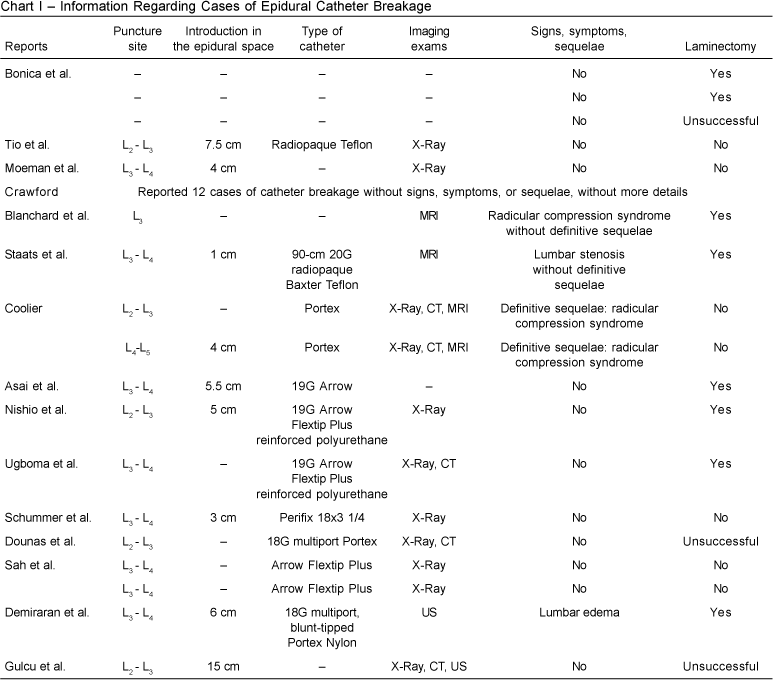BACKGROUND AND OBJECTIVES: The objective of this study was to review published cases of breakage of epidural catheters and, with the data gathered in the literature, to identify predisposing factors for catheter breakage, and list the recommended conducts to prevent and treat this complication. METHODS: The search included the data banks of Pubmed, Embase, and SciELO. RESULTS: A total of fifteen studies reporting 30 cases of breakage of epidural catheters were identified. Information regarding the catheterization and removal of the catheter, besides the type of catheter, were analyzed for each case. Complications related to the presence of retained catheter fragments, as well as the indications for exploratory laminectomy, were recorded. With the evidence gathered from the literature, recommendations for prophylaxis and treatment of this complication were elaborated. CONCLUSIONS: The catheter should not be inserted more than five centimeters into de epidural space. Exploratory laminectomy should be undertaken if the patient develops signs or symptoms of neurologic changes, if the catheter is inside the subarachnoid space, or whenever the tip of the catheter is emerging out of the skin. Due to the difficulty to localize retained fragments by imaging exams, catheters should be manufactured with materials that improve their visualization.
ANESTHETIC TECHNIQUES, Regional; COMPLICATIONS

